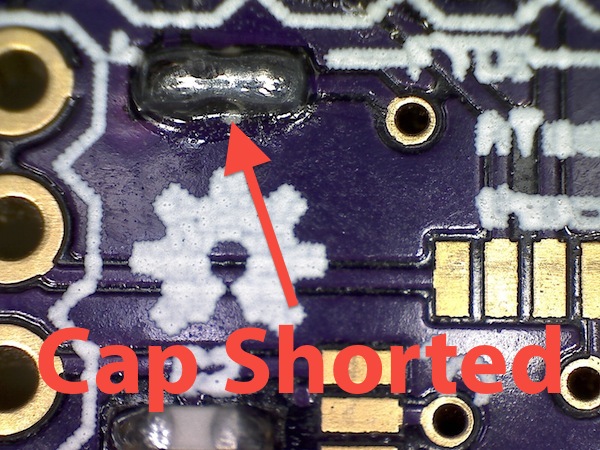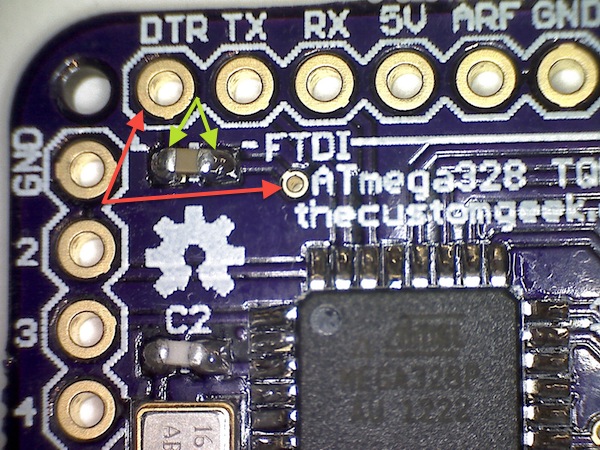First, I am happy to announce that the One Square Inch of Goodness and the FTDI Adapter are in the stock now and available for purchase!
In the video above, I show how I programmed the assembled kits as well as the raw TQFP IC’s without soldering anything to them. It’s a pretty simple setup, but solved the problem I was facing as well as made things a lot faster. As I mentioned in the video, pogo pins are found here, USBtinyISP here, and breadboard switch here (from Adafruit).
A note on using ICSP: – The Square Inch is designed to accept an FTDI connection for programming. Because of this, a .1µF capacitor is between the reset line of the ATmega328P and the pin labeled DTR. This is so when you load new sketches on the Square Inch, it will reset automatically via the DTR line on the FTDI adapter. When you use ICSP, you need to bypass this capacitor! Otherwise it will not work. The programming board I used in the video had the capacitor bypassed with solder (pictured below). There is also a via to the right of the capacitor that leads to the reset line. This can be shorted to the DTR pin to accomplish the same task, as I did to program the assembled boards.

On the assembled boards, if you wish to change the bootloader or upload sketches via ICSP, you can temporarily short the cap using tweezers on the cap itself (green arrows) or the DTR pin and the via leading to the reset line of the 328 (red arrows) as shown in the picture below.


Yaay, new video! *popcorn*
Jokes aside: nice job, good idea to speed up the bootloader process (also the unsoldered TQFP solution tends to be unreliable due to the fine pitch leads).
Do you assemble (solder) these boards yourself or have a pick-and-place machine do it? From the pictures I’d say you do it 😉
Price is reasonable too, you couldn’t manufacture it cheaper at home.
Thanks Geri, actually the unsoldered TQFP solution worked perfect every time!
Yes I do have a pick and place machine. It is a 1975 model and consist of an Italian processor with dual arms, an ESD safe tweezer add on and a very good set of eyes. So yeah, it’s me. 😉
Someone in the Amsterdam hackerspace had made a zif socket of a piece of PCI socket connected to a spanner. When I was there he was making a clamp version with a clothes peg instead of a spanner, for in circuit programming. The inline packages were spaced like a PCI slot. Perhaps there is something out there that is spaced like a TQFP.